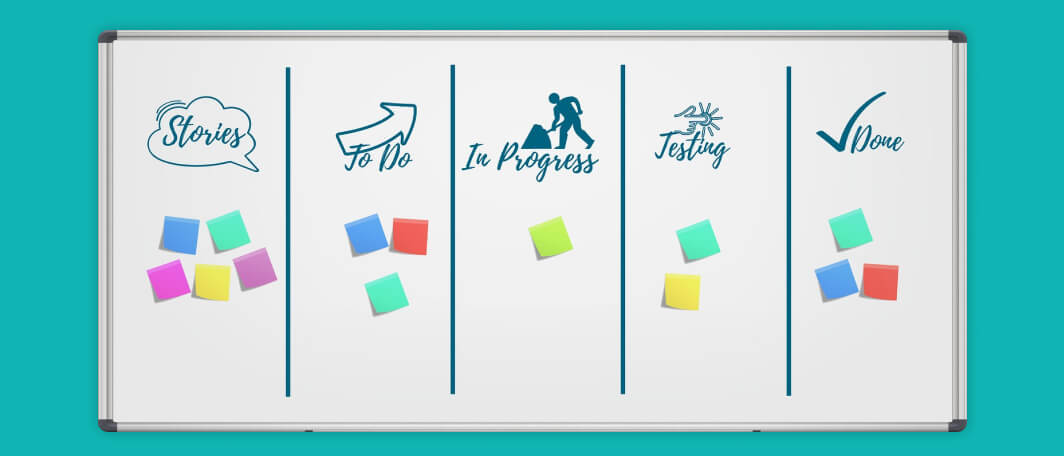How to organize and prioritize your HubSpot developers’ to-do list

Contents
To-do lists may sound like something I should recommend to a college student. But, if you’re a project manager who recently hired a HubSpot developer, a to-do list is more crucial than simply ticking off items from your notes.
To-do lists are vital to preventing wasted time. It boosts the developer's productivity, which is significant to your company's long-term goals. Simply put, wasted time leads to wasted company resources and revenue leakage.
So, if you’re a leader concerned about effective processes that deliver satisfying ROI, you may want to start making a HubSpot developers’ list. Let’s begin by unlearning one common mistake among leaders: Relying on communication tools to manage projects.
Email and Slack are communication tools, not a project management platform

"We can discuss and assign development tasks via Email and Slack," said every over-optimistic employer who regretted hiring a HubSpot developer.
First and foremost, email and Slack, as you will see with all its promotions, are communication tools. You can assign a few tasks using them and succeed, but think about it for the long term.
A month or two of project management on communication platforms will only create a back and forth of questions that may look like this:
Is the work done?
When will it get done?
Why is it taking so long?
These questions don't get things done but merely inquiries on project status.
This endless back and forth leads you to scheduling meetings, follow-up meetings, and more meetings that take up hours. By this time, you're not only wasting your developer's time. You're wasting everyone's time.
A 2019 Korn Ferry survey of 1945 workers found that 51% of professionals admitted spending too much time in meetings, even on calls, delayed their work to some extent. Another 16% said meetings took much time away from their actual tasks. In a much larger context, 67% of those surveyed said meetings kept them away from doing their best output.
As a project leader, the last thing you want to have on your plate is a distraction daily. Communication tools as a project management platform may not be the best fit to achieve that.
Crucial KPIs are lost when managing projects through communication tools

How do I track previous tasks? Where are the deliverables? What difficulties can we learn from a past project, so we don't repeat them in the future? These are your KPIs, which emails and Slack make tracking difficult.
KPIs are measurable data at the center of every decision-making, even if it only means deciding between you and your HubSpot developer. Tracking KPIs shows that your developer covered all tasks with the proper focus. Your communication platforms will not reflect these critical milestones.
On the other hand, a project management app can track overarching KPIs to achieve your goals. You can monitor each assigned task efficiently and effectively. Learn from the success or mistakes of past projects for future projects with what you can retrieve from the app.
Recall any files or deliverables easily without digging up too deep into your emails and chats. Get hold of measurable results to identify precisely whether your HubSpot developer is on track with what you want to achieve with your project.
Now, let’s organize your HubSpot developer’s list

Step 1: Choose your suitable system
Now let's move on to the first big step: building your unique system.
By "System," I'm not referring to the apps to use, but how you operate as a company no matter what apps you use. A system is about creating a routine and sticking to it, even if it means doing it repeatedly step-by-step each time.
1.1. Discuss how the company sets deadlines
Projects without deadlines are what everyone's dreams are made of. However, they don't exist.
Setting a deadline is your first step to successfully launching and closing a project. Discuss internally how you and colleagues (including the developer) set deadlines.
Create different deadlines for each project stage on top of the project's final deadline. Clarify all significant dates for all deliverables. Will there be deliverables per quarter, monthly, or bi-weekly? Discuss and agree even with daily deadlines.
As a development agency ourselves, we always prioritize a primary goal per quarter basis and then plan out all the critical milestones for each week.
Not only do we all work towards the same goal as a team, but we also have each week's milestones to guide us, week in and week out. Without them, we tend to lose focus as more and more projects come in each day.
1.2. Plan your priority structure and task types
Not every project is equal. Sometimes we launch a massive project that lasts for months, and in many cases, we have a one-time small task that we can complete in a few days.
In this step, you'll need to create your list of project priorities and types. Here's a sample workflow we use:
- Backlog - Tasks/projects that we may or may not execute in the future.
- High priority -Tasks we must complete in the next 1-2 days.
- Low priority - Tasks completion can wait within the next two weeks.
- Mid-priority - Tasks we can complete within a week.
- Urgent - Tasks that we must complete ASAP.
Some project types include:
- Bugs
- Full page development
- Module development
- Optimization
The clearer your project priorities and types, the less friction you'll face in the day-to-day development workflow. The last thing you'll want on your daily schedule is to discuss each assigned development task with your developers.
We must ensure each task is 100% clear before your developer starts working on it. Otherwise, you'll waste your developer's and your precious time.
1.3. Are there third-party contractors?
Depending on your industry, working with a full-time internal developer and a contractor often leads to drastically different development workflows.
The time available alone between the two often requires you to set different project priorities, deadlines, and efforts.
Please consider their daily working hours if you have a third-party contractor(s) in your development team. And do they work moonlighting as well?
1.4. Create a workflow for all your development steps
Now that you have your project types and priorities ready, it's time to build your development steps finally.
These steps should cover your initial ideation until project shipment and post-launch maintenance. All these should be visible to all parties, so everyone is accountable for completing all projects as a team.
Here is an example of project steps we use in our agency, GiantFocal:
- Backlog - Ideas you may or may not execute in the future.
- Open - Where all the projects/tasks your team has decided to work on.
- WIP - Work in progress.
- Internal QA - Other than the internal QA that your developer has to complete in the WIP step
- Internal Revisions - All deliverables must meet all the initial requirements before the client reviews them.
- Client Revisions - Mistakes happen. The client is free to request revisions based on their initial requirements. Change of conditions is also often, but parties should complete all change requests at this stage.
- Launch - Once all revision requests are complete, it's time to launch the development to the live site.
- Maintenance - 10-15 days after the launch, the client is free to request additional bug fixes or minor changes to complete the project.
I understand the steps above are for client-facing agencies. Since you're looking to build an internal development team, you may alter the steps above by removing step 6 (Client revisions).
Step 2: Think backward

In the world of development, we always learn to think backward. First, think of the outcome we're trying to build, and then figure out the steps we should take to achieve that goal.
We find it especially useful for any project planning, not only for a development workflow.
To assign an efficient project timeline, you must determine the project's goal.
Will it be an entire site build? Or only one page? Or even just one small module? When do you need it to launch?
From that, list all the steps needed to reach the finish line. Here’s an example of a module development:
- Create a sketch of the module
- Create the rough content (lorem ipsums also work)
- Create a high-fidelity mockup
- Create a detailed project scope for the developer
- Development phase
- Revisions phase
- Launch
If this is your first time assigning a task, estimating the required effort and number of hours may be tricky. So it's a good idea to discuss this with your team members so everyone is on the page regarding the action each task will require.
Once you get a good ballpark, count backward from the initial deadline to find your project start date and see if it's possible.
If it's impossible, either extend the deadline or set this task to a higher priority so your team can prioritize it over other less-important tasks.
Step 3: Build a scalable foundation with the correct app for you

You should have an optimized system to apply to any project management tool.
If you already have a tool in your arsenal, you can try using that first and see if it lacks any features that would affect the overall workflow.
If you're starting from scratch, we have some suggestions on the apps we've personally tested and used so far:
1. ClickUp
Who doesn't know ClickUp? If you have never used it, you should have at least heard of its name.
ClickUp is one of the most prominent players in the project management tools that raised $400M at a whopping $4 billion business valuation.
We use ClickUp since it provides all the features needed, including kanban boards, separate folders and subfolders, automation, docs, email integration, and in-task chat.
ClickUp allows project members to send and receive emails in one place. Nobody has to open email apps but instead has access to compose and reply instantly through ClickUp. Attachments are allowed; everyone can tag anyone to keep track of relevant discussions and project changes.
2. Asana
We were a light user of Asana a few years ago. My opinion may not be about the current platform, but from what I heard from fellow agency owners, Asana is a robust and mature platform to host your whole company. However, there's a shared reservation for lack of time tracking features. More so, navigating the channel requires expertise since it's a mature platform.
Asana may not be as complete as ClickUp, but you can always register for a free trial to see if it's a good fit.
3. Trello
The one app that single-handedly revolutionized the whole online project management industry. Trello introduced the kanban board-based app that almost every project management tool adopts today.
If you're looking for a simple, robust, and "features-enough" platform, Trello should be more than enough.
Many Trello users I know love the platform for its easy-to-navigate features. It is easy to understand. Perhaps this is why more than 90 million registered Trello users are across over 100 countries as of 2021.
By estimates, more than 2 million teams are using Trello to manage their projects more effectively. The platform can reach up to 1.1 million active users daily and more than 150,000 registrants weekly. As many as 80% of Fortune 500 companies are on the platform.
4. Others
There are countless other project management apps out there. If you already have one that you think works for your new system, feel free to use it.
If you prefer to start from a brand new app, then you can start with the free tiers of ClickUp or Trello.
BONUS: Points system

I intentionally put this separate from other sections to show this is important but completely optional.
In the development world, we often use a methodology called scrum. We won't discuss the whole scrum methodology here since it would take another 3,000 words to cover the basics, but we will take a tiny part of the scrum concept that applies to any organization: the points system.
For both the task assigned and the assignee (in this case, the developer), it's always a challenging task to estimate an accurate time estimate of how quick/long a task will take.
Now, the main goal of the points system is to estimate the effort it takes and not based on the hours a task will take. Not everyone has the same experience and working speed.
Some of us may type 2x or 3x faster than our colleagues. A developer may have five years of experience vs. a junior who just graduated from university. Generalizing everyone based on hours will create unfair task expectations that may impact your project's success.
That's why the points system is a perfect substitute. But how does it work?
The points system works using Fibonacci. You know, the math sequence we learned back in school?
0, 1, 2, 3, 5, 8, 13, 21…
Your first goal with your team is to decide that one task representing a point of 1. It should be the most straightforward task you can think of. Maybe a simple bug fix? Or a text change request?
From there, you should use that task (that you assigned point 1) as a calculation base for other jobs. Say you have another task that you think requires an effort 2x of your 1-point task, then you can assign point 2.
Now you have another task that requires another 50% effort from point 2. You can assign point 3 in this case.
What happens if there is no Fibonacci number to represent a specific task? Say double the effort from point 2. Round it up to the nearest number, in this case: 5.
The next question is, what does a point represent? Is it hours? Days? Or anything else?
It varies, and it depends on each organization based on your decision as a team. Many use it for days. Many use it as a productivity calculation against the hours tracked. It's your call, and you can always discuss it with your team for the best way to move forward.
Stop wasting time. Organize your HubSpot developers’ to-do list now
HubSpot developers’ responsibilities require analytical and time management skills for maximum productivity. However, daily distractions can rob their time away from your assigned projects without you even noticing.
Wasted time can kill productivity and disrupt ROI flows in the long term. You can avoid this by starting with a straightforward process: Organizing a to-do list.
With a to-do list, developers can accomplish tasks daily, focus on specific project objectives according to project timelines, and acceptance with your set parameters. However, unlike the typical notes that people do, a developer’s to-do list requires an effective project management app.
A project management app allows specific systems you can customize depending on which ones are effective for your working relationship with your HubSpot developer. With a project app, you can prioritize the most crucial tasks, re-prioritizing and updating actions along the process.
Ultimately, a project management app can track important KPIs and milestones of which success you can replicate with your future projects. On a larger scale, you can identify and manage project risks, including budgetary mistakes. All it takes is starting with one straightforward solution.
Take action now and be in control of your projects. Work with a team of developers who are experts in time management. Contact our team of developers today.